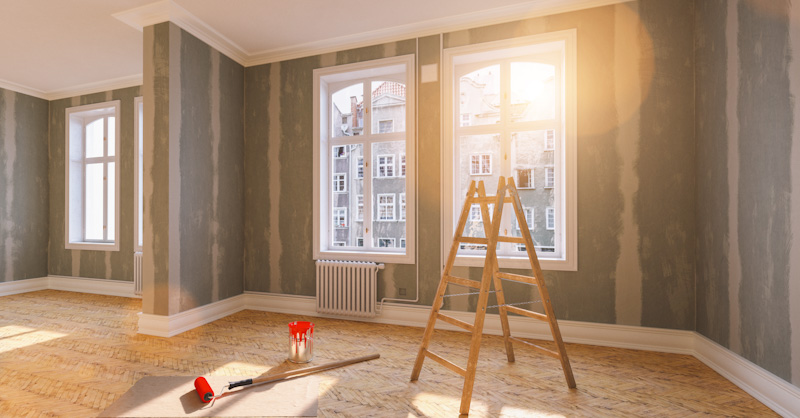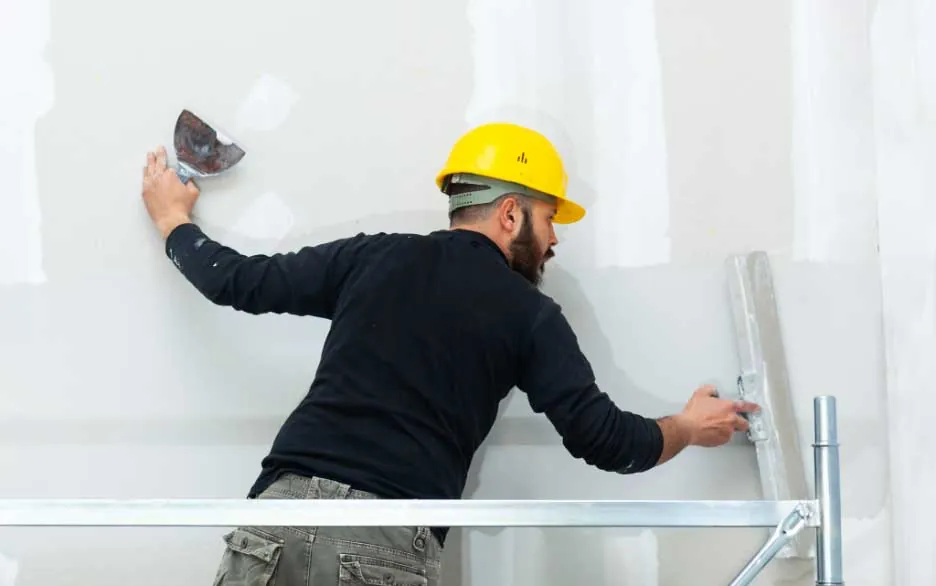Drywall Installation Made Easy: Tips for Perfect Results
Drywall installation is frequently perceived as a challenging task, yet with the right strategy and expertise, it can come to be a convenient venture. Choosing quality products and preparing the installment area are crucial primary steps that establish the foundation for success. Additionally, mastering strategies for cutting, hanging, and completing drywall can considerably impact the end result. As we check out these necessary tips, you may discover that even the tiniest modifications in your approach can bring about remarkably improved outcomes, leaving you to consider just how these methods can transform your following project.
Selecting the Right Products
Selecting the proper materials for drywall setup is crucial to accomplishing a sturdy and visually pleasing coating. drywall repair. The key part, drywall sheets, usually come in different thicknesses, with 1/2-inch sheets being common for indoor walls. For areas needing added dampness resistance, such as cooking areas or bathrooms, consider utilizing eco-friendly board or concrete board, which are particularly made to withstand humidity

Furthermore, selecting the best fasteners-- either screws or nails-- is essential for securing the drywall to the framework. Drywall screws are usually preferred for their holding power and minimized danger of popping. Consider the finishing touches such as guide and paint, which not just improve the appearance yet likewise safeguard the drywall from moisture and wear.
Preparing the Installment Location
Prior to beginning the drywall installment process, it is crucial to prepare the setup location thoroughly. A tidy workspace reduces the threat of damage to existing products and allows for effective activity during setup.
Following, examine the wall surfaces and ceiling for any kind of imperfections, such as splits, holes, or mold. Address these problems ahead of time; patch any damages and permit sufficient time for repair services to completely dry. Additionally, make sure that electric outlets, switches, and plumbing are appropriately placed and accounted for, as this will affect drywall positioning.
Think about the environmental conditions too. A stable temperature and moisture degree are vital for optimal attachment and efficiency of the drywall products. If essential, make use of a dehumidifier or heating system to develop ideal problems.
Cutting and Hanging Drywall
The key to reliable drywall installment depends on the exact cutting and hanging of the panels. Begin by measuring the space accurately, taking into consideration any kind of blockages such as electric outlets or windows. Make use of a straight side and an utility knife to rack up the drywall along your dimensions, then snap it along the racked up line for a tidy break. For more intricate cuts, such as around electrical outlets, a drywall saw can be used for precision.

Always work from the top down and entrusted to right, making certain that you keep a staggered pattern to enhance stability. Appropriately hanging the drywall establishes the structure for a smooth coating, ultimately bring about superior lead to your drywall project.
Insulation and Mudding Techniques
While appropriate cutting and dangling of drywall establishes the stage, the next critical step includes understanding taping and mudding techniques to make sure a smooth finish. Taping is necessary for reinforcing joints and avoiding fractures; it entails installing tape into the applied joint compound (mud) Begin with a top quality fiberglass or paper tape, using the tape over the joint and pressing it into the wet mud this website utilizing a taping blade, making certain no air bubbles continue to be.
Once the tape is in place, apply a thin layer of joint compound over the tape, feathering the edges to produce a smooth shift to the drywall surface area. Permit this layer to completely dry entirely prior to sanding it gently to get rid of imperfections. Repeat this process, applying additional layers of mud as necessary-- generally two to three coats-- while slowly broadening the application area with each layer to achieve a seamless look.
After the final coat dries, sand the surface with a fine-grit sandpaper until smooth. drywall repair. Keep in mind to use a mask during sanding to avoid inhaling dirt fragments. Understanding these taping and mudding methods is important for accomplishing a professional-quality surface in your drywall setup
Finishing Touches for Perfection
Attaining a remarkable drywall setup this post goes beyond taping and mudding; it culminates in the ending up touches that boost the general appearance. These last actions are important in guaranteeing a professional-grade finish that boosts the appearances of your room.
Begin by fining sand the dried joint substance to produce a smooth surface. Make use of a fine-grit sandpaper and a sanding block or pole sander for optimum control. Pay specific attention to edges and edges, as these locations often tend to require even more careful work. After fining sand, clean down the walls with a moist cloth to get rid of any type of dirt bits, ensuring a tidy surface for paint.
Next, use a primer particularly designed for drywall. his comment is here This step is important, as it helps secure the joint substance and supplies a consistent base for the topcoat. When the guide dries, examine for any kind of flaws, and repair as required.
Final Thought
In final thought, successful drywall installment pivots on the mindful option of products, thorough preparation of the installation area, and precise execution of cutting and hanging strategies. Proficiency of taping and mudding procedures is crucial for accomplishing a smooth coating.
Drywall installment is often regarded as a difficult task, yet with the ideal technique and understanding, it can end up being a manageable venture.Choosing the suitable materials for drywall installation is crucial to achieving a durable and cosmetically pleasing coating.Prior to beginning the drywall setup process, it is important to prepare the installation location completely. Grasping these taping and mudding techniques is crucial for achieving a professional-quality surface in your drywall installment.
In verdict, successful drywall installation pivots on the cautious selection of products, complete prep work of the setup area, and specific execution of cutting and hanging strategies.